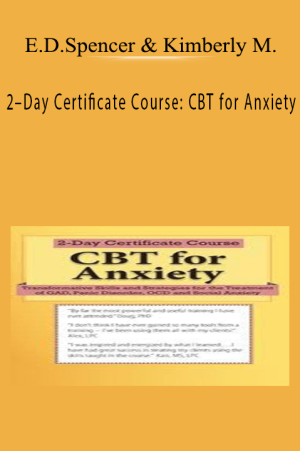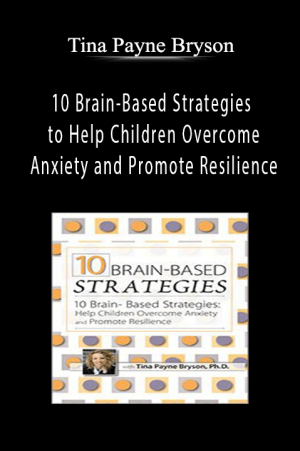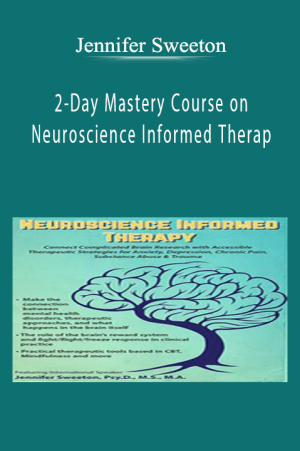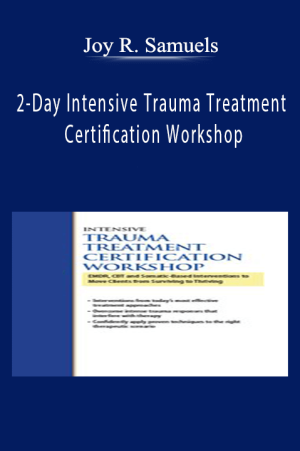Related products
-
Medical & Health
2–Day Certificate Course: CBT for Anxiety: Transformative Skills and Strategies for the Treatment of GAD, Panic Disorder, OCD and Social Anxiety – Elizabeth DuPont Spencer & Kimberly Morrow
3.67 out of 5$299.00Original price was: $299.00.$74.00Current price is: $74.00. -
Medical & Health
Motivated Training Clients That Pay Program – Mike Barron
4.75 out of 5$197.00Original price was: $197.00.$46.00Current price is: $46.00. -
Medical & Health
[Audio] EP17 Clinical Demonstration 02 – Sharing an Early Life Challenge and Unmet Childhood Need – Harville Hendrix, PhD and Helen LaKelly Hunt, PhD
3.51 out of 5$20.00Original price was: $20.00.$4.00Current price is: $4.00. -
Medical & Health
[Audio] The Collected Works – Audio
4.71 out of 5$20.00Original price was: $20.00.$4.00Current price is: $4.00. -
Medical & Health
10 Brain-Based Strategies to Help Children Overcome Anxiety and Promote Resilience – Tina Payne Bryson
3.64 out of 5$49.00Original price was: $49.00.$11.00Current price is: $11.00. -
Medical & Health
2-Day Mastery Course on Neuroscience Informed Therapy: Connect Complicated Brain Research with Accessible Therapeutic Strategies for Anxiety, Depression, Chronic Pain, Substance Abuse & Trauma – Jennifer Sweeton
3.7 out of 5$149.00Original price was: $149.00.$53.00Current price is: $53.00. -
Medical & Health
2–Day Certificate Course: Heal the Shattered Self: Advanced Evidence-Based Interventions to Effectively Treat Shattered Clients – Steve A Johnson
4.13 out of 5$299.00Original price was: $299.00.$74.00Current price is: $74.00. -
Medical & Health
2-Day Certificate Course: MBSR: Mindfulness Based Stress Reduction – Elana Rosenbaum
4.59 out of 5$299.00Original price was: $299.00.$74.00Current price is: $74.00. -
Medical & Health
2-Day Intensive Trauma Treatment Certification Workshop: EMDR, CBT and Somatic-Based Interventions to Move Clients from Surviving to Thriving – Jennifer Sweeton
3.51 out of 5$439.00Original price was: $439.00.$67.00Current price is: $67.00. -
Medical & Health
[Audio] Lectures & Demonstrations – Pasadena – St. Luke’s Hospital, 1958
3.88 out of 5$62.00Original price was: $62.00.$14.00Current price is: $14.00.



![[Audio] EP17 Clinical Demonstration 02 - Sharing an Early Life Challenge and Unmet Childhood Need - Harville Hendrix, PhD and Helen LaKelly Hunt, PhD](https://coursegb.com/wp-content/uploads/2021/12/Harville-H.-Helen-LaKelly-H.-300x451.png)
![[Audio] The Collected Works - Audio](https://coursegb.com/wp-content/uploads/2021/12/Audio-The-Collected-Works-Audio-300x451.png)





![[Audio] Lectures & Demonstrations - Pasadena - St. Luke's Hospital, 1958](https://coursegb.com/wp-content/uploads/2021/12/Audio-Lectures-Demonstrations-Pasadena-St.-Lukes-Hospital-1958-300x451.png)